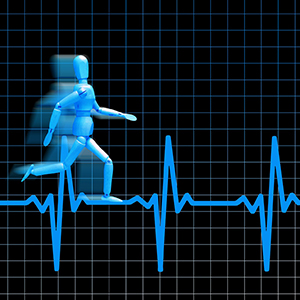Heart rate recovery in adult individuals with asthma

Submitted: March 21, 2022
Accepted: May 10, 2022
Published: May 13, 2022
Accepted: May 10, 2022
Abstract Views: 1097
PDF: 295
Publisher's note
All claims expressed in this article are solely those of the authors and do not necessarily represent those of their affiliated organizations, or those of the publisher, the editors and the reviewers. Any product that may be evaluated in this article or claim that may be made by its manufacturer is not guaranteed or endorsed by the publisher.
All claims expressed in this article are solely those of the authors and do not necessarily represent those of their affiliated organizations, or those of the publisher, the editors and the reviewers. Any product that may be evaluated in this article or claim that may be made by its manufacturer is not guaranteed or endorsed by the publisher.
Similar Articles
- Gopal Chawla, Ram Niwas, Nishant Kumar Chauhan, Naveen Dutt, Taruna Yadav, Priyank Jain, Pancreatic pleural effusion masquerading as right sided tubercular pleural effusion , Monaldi Archives for Chest Disease: Vol. 89 No. 3 (2019)
- Evangelos Balis, Sotiris Kakavas, Steven Kompogiorgas, Konstantinos Kotsifas, Georgios Boulbasakos, Presentation of pulmonary tuberculosis and actinomyces co-infection as a lung mass: a literature review and unique case report , Monaldi Archives for Chest Disease: Vol. 89 No. 3 (2019)
- Rishabh Raj, Kavitha Venkatnarayan, Uma Maheswari Krishnaswamy, Uma Devaraj, Priya Ramachandran, Jayanthi Savio, A filamentous trio , Monaldi Archives for Chest Disease: Vol. 90 No. 4 (2020)
- Cinzia Nugara, Annamaria Lo Voi , Davide Diana, Silvia Sarullo, Antonino Zarcone, Filippo M. Sarullo, A case of extensive biatrial clot straddling the patent foramen ovale , Monaldi Archives for Chest Disease: Vol. 91 No. 2 (2021)
- Shivam Garg, Pratap Upadhya, Arul Kumar, Norton Stephen, Bala Subramanian, Overcoming the challenges of a misdiagnosed rare lung disease – idiopathic pleuroparenchymal fibroelastosis , Monaldi Archives for Chest Disease: Vol. 94 No. 2 (2024)
- Rizk Sayad R. Sarhan, Omnia Y. Habashy, Raafat R. Mohammed, Yasmin M. Marei, Active versus latent pulmonary tuberculosis: which one is the appropriate distinguishing biomarker? , Monaldi Archives for Chest Disease: Early Access
- Vishal Chopra, Baljeet Singh Virk, Siddharth Chopra, Monika Bansal, Jain Chungath, Application of CBNAAT (Xpert MTB/RIF assay) in new smear negative pulmonary tuberculosis patients , Monaldi Archives for Chest Disease: Vol. 90 No. 1 (2020)
- Neeraj Kumar Gupta, Rohit Kumar, Harsh Vardhan Puri, Nitesh Gupta, Siddharth Raj Yadav, Pranav Ish, Chest percussion, a common yet underutilized art , Monaldi Archives for Chest Disease: Vol. 90 No. 3 (2020)
- Ritu Kulshrestha, Himanshi Saxena, Raj Kumar, Sonam Spalgais, Parul Mrigpuri, Nitin Goel, Balakrishnan Menon, Meenu Rani, Pawan Mahor, Ishita Bhutani, Subtyping of advanced lung cancer based on PD-L1 expression, tumor histopathology and mutation burden (EGFR and KRAS): a study from North India , Monaldi Archives for Chest Disease: Vol. 93 No. 4 (2023)
- Daniel Brito, Igor Goykhman, Kevin Bryan Lo, Yaser Alhamshari, Jorge Luis Peñalver, Francisco Aguilar, Eduardo Quintero, Aditi Kalla, Evan Friend, Gregg S. Pressman, Aortic stenosis calcium scoring in a racially mixed sample , Monaldi Archives for Chest Disease: Vol. 90 No. 4 (2020)
<< < 50 51 52 53 54 55 56 57 58 59 > >>
You may also start an advanced similarity search for this article.

 https://doi.org/10.4081/monaldi.2022.2265
https://doi.org/10.4081/monaldi.2022.2265





